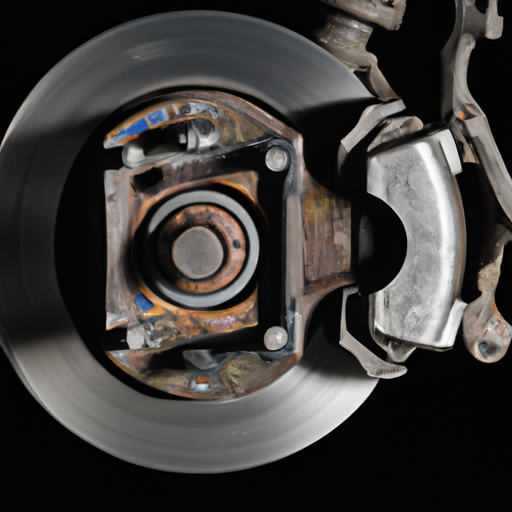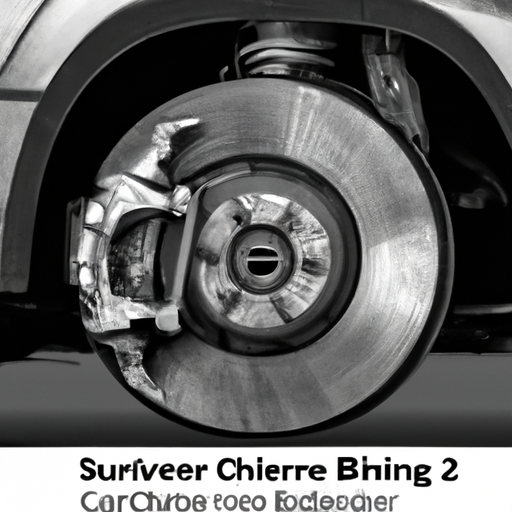If you own a Chevy Silverado, you may have experienced some frustrating brake bleeding problems. These issues can be a serious headache, causing decreased braking performance and potential safety concerns. In this article, we will explore some of the common brake bleeding problems that Silverado owners face and discuss possible solutions to help you tackle this issue head-on. Whether you’re a seasoned car enthusiast or a first-time truck owner, we’ve got you covered with practical tips and advice to ensure your Chevy Silverado’s brakes are in top-notch condition. So, let’s get right into it and address those brake bleeding problems once and for all!
Common Brake Bleeding Issues
Air in Brake Lines
One of the most common brake bleeding issues that Chevy Silverado owners encounter is the presence of air in the brake lines. When air becomes trapped in the brake system, it can cause a spongy or soft brake pedal, reduced braking efficiency, and even complete brake failure. This can be a result of improper bleeding techniques or a leak in the brake system.
Contaminated Brake Fluid
Contaminated brake fluid is another frequent issue that affects the brake bleeding process. Over time, brake fluid can become contaminated with moisture, dirt, debris, and other particles. This can result in a loss of brake performance, as contaminated fluid can lead to premature wear and damage to brake components. Additionally, contaminated brake fluid can cause corrosion within the brake system, further compromising its functionality.
Faulty Brake Bleeder Screws
Faulty brake bleeder screws can also contribute to brake bleeding problems in Chevy Silverado trucks. These screws are crucial for releasing air from the brake system during the bleeding process. If the bleeder screws are worn, damaged, or improperly sealed, they can allow air to re-enter the system, negating the effects of the bleeding procedure. It is important to inspect and replace any faulty bleeder screws to ensure proper brake function.
Symptoms of Brake Bleeding Problems
Soft or Spongy Brake Pedal
One of the most noticeable symptoms of brake bleeding problems is a soft or spongy brake pedal. When air or contaminants are present in the brake system, it can cause the brake pedal to feel less firm and responsive. This can greatly affect your ability to apply consistent pressure and control the vehicle’s braking. If you notice that your brake pedal feels mushy or sinks to the floor when pressed, it is a clear indication of brake bleeding issues.
Brake Fluid Leaks
Another symptom of brake bleeding problems is the presence of brake fluid leaks. If you notice any fluid puddles or stains beneath your Chevy Silverado, it is likely an indication of a leak in the brake system. Leaks can occur due to damaged brake lines, worn seals, or faulty brake components. It is crucial to address brake fluid leaks promptly, as they not only affect the braking performance but also pose a serious safety risk.
Reduced Braking Efficiency
A decrease in braking efficiency is another sign of brake bleeding problems. If you find that your Chevy Silverado takes longer to stop or requires more pressure on the brake pedal to bring the vehicle to a halt, it is an indication that the brake system is not functioning optimally. Brake bleeding problems can lead to air pockets or contaminated fluid, both of which impair the ability of the brakes to generate the necessary stopping power. It is essential to address reduced braking efficiency to ensure your safety on the road.
Causes of Brake Bleeding Problems
Improper Brake Bleeding Technique
One of the main causes of brake bleeding problems is the use of improper bleeding techniques. Bleeding the brakes requires attention to detail and following a specific procedure to ensure optimal results. If the bleeding process is not carried out correctly, it can leave air pockets in the brake lines, compromising the brake system’s functionality. It is important to follow the manufacturer’s recommendations or seek professional guidance when performing brake bleeding on your Chevy Silverado.
Brake System Component Failure
Brake system component failure can also lead to brake bleeding problems. Over time, brake components, such as master cylinders, calipers, hoses, and lines, can wear out or become damaged. When these components fail, it can result in air entering the brake system or brake fluid leaks, leading to brake bleeding issues. Regular inspections and maintenance of the brake system can help identify and address potential component failures before they cause major problems.
Brake Fluid Contamination
Contaminated brake fluid is another leading cause of brake bleeding problems. As mentioned earlier, brake fluid can become contaminated with moisture, dirt, and debris over time. Additionally, old or expired brake fluid can break down and lose its effectiveness. Contaminated brake fluid can clog or damage brake system components, leading to improper bleeding. Regularly flushing and replacing the brake fluid can help prevent contamination and maintain optimal brake function.
DIY Brake Bleeding Methods
Traditional Pump and Hold Method
The traditional pump and hold method is a common DIY brake bleeding technique. To perform this method, you will need a helper and a brake bleeder wrench or a suitable tool to open and close the bleeder screw. Start by locating the bleeder screws on each brake caliper or wheel cylinder. Begin with the farthest wheel from the master cylinder and work your way towards the closest one. With the help of your assistant, pump the brake pedal several times and hold it down. While the pedal is held down, open the bleeder screw to release any air or fluid. Close the screw before releasing the pedal. Repeat this process several times until all air bubbles are eliminated and only clean fluid comes out.
Pressure or Vacuum Bleeding
Pressure or vacuum bleeding methods are more advanced DIY techniques that require specialized equipment. These methods are particularly useful for effectively removing air from the brake system. With pressure bleeding, a pressurized container is connected to the master cylinder reservoir, forcing the fluid through the system and expelling any air. Vacuum bleeding involves using a vacuum pump to draw out air and fluid from the bleeder screws. Both methods require careful attention to detail and following the manufacturer’s instructions for proper use.
Gravity Bleeding
Gravity bleeding is a simple and straightforward DIY method that can be performed without any specialized tools. To gravity bleed the brakes, start by locating the bleeder screws on each brake caliper or wheel cylinder. Then, open the bleeder screw slightly and allow gravity to do the work. Keep the brake fluid reservoir topped up while the fluid slowly drains out from the bleeder screw. This method requires patience as it can take some time for all the air bubbles to escape from the brake lines. Once clean fluid is flowing consistently, close the bleeder screw and repeat the process for all four wheels.

Step-by-Step Guide for Brake Bleeding
Prepare Necessary Materials
Before starting the brake bleeding process, gather all the necessary materials. You will need a brake bleeder wrench or a suitable tool, a brake bleeder kit (if using pressure or vacuum bleeding methods), a container to collect the old brake fluid, a bottle of new brake fluid, and protective gloves and eyewear.
Locate Brake Bleeder Screws
Next, locate the brake bleeder screws on each brake caliper or wheel cylinder. Refer to your Chevy Silverado’s owner manual for the specific location of these screws. It is important to identify the correct screws to avoid mistakenly bleeding a different component.
Attach Brake Bleeder Kit
If you are using pressure or vacuum bleeding methods, attach the brake bleeder kit to the master cylinder reservoir or the bleeder screws, depending on the method’s instructions. Follow the manufacturer’s guidelines to ensure proper attachment and functionality.
Begin Bleeding Process
Start the brake bleeding process by opening the bleeder screw slightly. If using the pump and hold method or gravity bleeding, have a helper press the brake pedal, hold it down, and then open the bleeder screw to release air and fluid. If using pressure or vacuum bleeding, follow the instructions provided with the kit to initiate the bleeding process.
Repeat for Each Wheel
Repeat the bleeding process for each wheel, starting with the farthest one from the master cylinder and working your way towards the closest one. This ensures that all air bubbles are properly expelled from the entire brake system. Remember to close the bleeder screw before your helper releases the brake pedal.
Check Brake Fluid Level
After bleeding all four wheels, check the brake fluid level in the reservoir. Top it up with new brake fluid if necessary, ensuring it reaches the recommended level. Proper brake fluid levels are crucial for the safe and efficient operation of your Chevy Silverado’s brakes.
Preventive Measures for Avoiding Brake Bleeding Problems
Regular Brake Fluid Flush
One of the best preventive measures for avoiding brake bleeding problems is to perform regular brake fluid flushes. Old or contaminated brake fluid should be flushed out and replaced with fresh fluid at the manufacturer-recommended intervals. This not only helps prevent contamination but also ensures that the brake system operates at its best.
Inspecting Brake Lines and Components
Regularly inspecting the brake lines and components can help identify potential issues before they result in brake bleeding problems. Look for signs of wear, damage, or leaks in the brake lines and examine the condition of brake components such as master cylinders, calipers, hoses, and seals. Addressing any abnormalities promptly can prevent further damage to the brake system.
Proper Brake Bleeding Technique
Using the proper brake bleeding technique is crucial for preventing brake bleeding problems. Follow the manufacturer’s recommended procedure or seek professional guidance when bleeding the brakes. Taking the time to learn the correct technique ensures that air is effectively expelled from the brake system, improving its overall performance and safety.
When to Seek Professional Help
Persistent Brake Bleeding Issues
If you have attempted DIY brake bleeding methods and are still experiencing persistent brake bleeding issues, it may be time to seek professional help. A trained mechanic will have the necessary expertise and specialized equipment to diagnose and address complex brake bleeding problems effectively.
Severe Brake System Leaks
Severe brake system leaks should always be addressed by a professional. If you notice an excessive amount of brake fluid leaking, it is essential to have the issue resolved immediately. Brake fluid leaks can significantly compromise the braking performance and pose a safety risk. A professional mechanic will be able to identify the source of the leak and repair it effectively.
Unsure about Brake Fluid Contamination
If you are unsure whether your brake fluid is contaminated or need professional guidance on determining its condition, it is advisable to seek help from a mechanic. They can perform tests and inspections to assess the level of contamination and recommend the appropriate course of action, such as a brake fluid flush or component repair.
Potential Costs of Brake Bleeding
Brake Bleeding Kit
The cost of a brake bleeding kit can vary depending on the type and quality of the kit. On average, a DIY brake bleeding kit can range from $30 to $100. Higher-end kits with advanced features may be more expensive.
Labor Costs
If you decide to seek professional help for brake bleeding, labor costs will vary depending on the mechanic’s hourly rate and the complexity of the job. On average, you can expect to pay between $100 and $200 for brake bleeding services at a reputable auto repair shop.
Brake Fluid Replacement
The cost of brake fluid replacement depends on the type and quantity of fluid required for your Chevy Silverado. Brake fluid typically costs around $10 to $20 per quart. The total cost will vary based on the number of quarts needed for a complete fluid flush.

Importance of Addressing Brake Bleeding Problems
Ensures Safety and Reliability
Addressing brake bleeding problems is crucial for ensuring the safety and reliability of your Chevy Silverado. A properly functioning brake system is essential for stopping the vehicle safely and effectively, especially in emergency situations. Ignoring brake bleeding problems can lead to brake failure, compromising the safety of you, your passengers, and other drivers on the road.
Prevents Brake Failure
Brake failure is one of the worst-case scenarios that can occur if brake bleeding problems are not addressed promptly. A failed brake system can result in the inability to stop the vehicle or control its speed, leading to accidents, injuries, and even fatalities. Regular brake maintenance and timely addressing of any bleeding issues can prevent such catastrophic events.
Improves Braking Performance
By addressing brake bleeding problems, you can significantly improve the braking performance of your Chevy Silverado. Properly bleeding the brakes removes air pockets and ensures that clean, uncontaminated fluid is circulating throughout the system. This allows the brakes to generate maximum stopping power and enhances overall braking performance.
Conclusion
Proper brake bleeding is essential for maintaining the performance and safety of your Chevy Silverado. By being aware of common issues, symptoms, and causes related to brake bleeding problems, you can take preventive measures and address any issues promptly. Whether you choose to perform DIY brake bleeding or seek professional help, it is important to ensure effective and proper brake bleeding procedures. Remember, your brakes play a crucial role in keeping you safe on the road, so never ignore any signs of brake bleeding problems and always prioritize the maintenance and care of your Chevy Silverado’s brake system.



